Tissue and Artery Forceps
Forceps that are used to grasp and manipulate tissues vary in their design dependent on the type of tissue they are intended for. As with all instruments inappropraite use may lead to damage to tissues or to the instruments.
Artery forceps are primarily use as haemostatic forceps to grasp vessels and allow ligation of those vessels. They vary in size for use on fine, delicate vessels to large vascular pedicles. Artery forceps can also be used to grasp tissues, sutures and other prosthetic materials. Care should be taken as they are crushing forspes that can damage delicate structures.
Allis
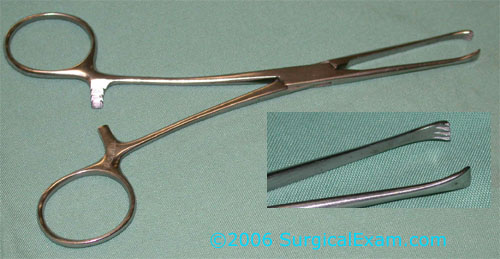
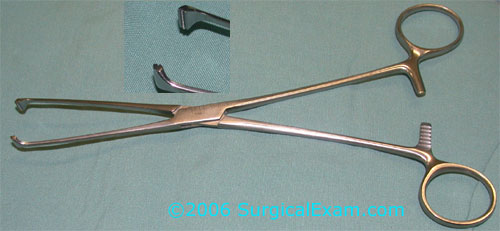
Light weight toothed forceps with a broad grasping area.
Morrison's

Heavier toothed forceps used on tough tissues such as fascia or skin
Kocker's
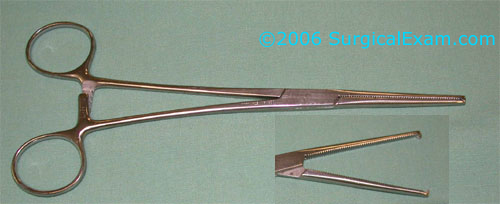

Strong toothed tissue forceps used for grasping tough fascia. Straight and curved Kocker's are available in varying lengths.
Babcock's
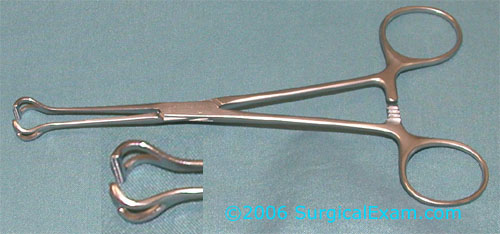
Lane's

Heavy forceps with a single tooth.
DuVal's

A light weight forcep with a large grasping surface to distribute force and reduce trauma to tissues. Often useful for grasping the stomach or lung. They will still damage more delicate tissues.
Rampley's

Often used to hold prep sponges these long heavy forceps are also useful for grasping the gall bladder at cholecystectomy.
Artery forceps
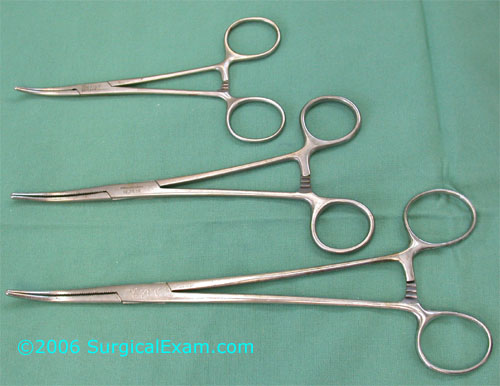
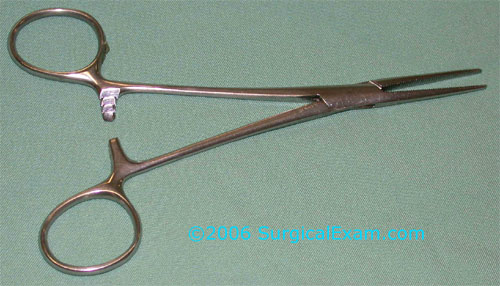
Usually available as straight or curved. The smallest are known as mosquito forceps and they range through to 5 inch Crile's forceps and 7 inch long fine forceps. The curve allows easier placement of ligatures around the forcep.
Shod forceps

Artery forceps may be used to hold suture material. These forceps may fracture modern monogilament sutures and thereby weaken the material. To avoid damage to sutures, particularly useful in vascular surgery, rubber boots are applied to the jaws of an artery forceps. This allows the suture material to be clamped without significant damage.
Robert's

Larger forceps with similar design and function to other artery forceps.
Mixters

Fine right angled forceps.
Lahey's

Larger right angled forceps.
Moynihan's

These are heavy right angled forceps.
DesJardin's
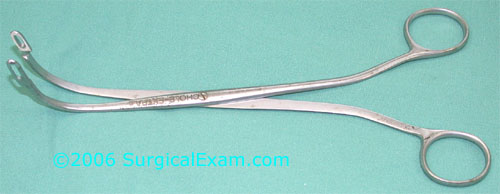
Primarily designed for grasping gallstones. They are available with various curves to access the bile duct during open surgery.
MacGill's

These forceps are used typically in the oropharynx. They are perticularly useful for placement of nasogastric tubes as the curve allows the hands to be keep out of the line of vision whilst using the instrument.